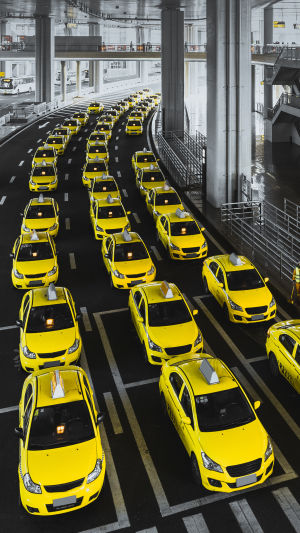In the fast-paced world of urban mobility, transportation taxis have emerged as an indispensable and versatile mode of getting from point A to point B.
These vehicles have evolved beyond their traditional role, offering a range of services catering to commuters' diverse needs. Let’s delve into transportation taxis, shedding light on their evolution, features, benefits, and impact on modern transportation systems.
The Evolution of Transportation Taxis
Transportation taxis, commonly referred to as taxis, have a rich history dating back to the late 19th century when they first hit the streets of major cities. Initially, taxis were horse-drawn carriages, but the advent of the automobile in the early 20th century transformed the industry. Today, we have a myriad of taxi types, from traditional yellow cabs to modern ridesharing services.
Features of Transportation Taxis
Convenience: One of the most appealing aspects of transportation taxis is their convenience. These vehicles are available around the clock, providing on-demand service to passengers. Whether you need a ride to the airport at dawn or a lift home after a late-night gathering, taxis are there to serve you.
Professional Drivers: Taxi drivers are trained and licensed professionals who navigate city streets with skill and efficiency. They are well-versed in local traffic regulations, ensuring a safe and reliable journey.
Diverse Fleet: Taxis come in various shapes and sizes to accommodate different passenger needs. From compact sedans to spacious minivans, there is a taxi for every occasion.
Technological Advancements: The advent of technology has revolutionized the taxi industry. Mobile apps have made it easier than ever to hail a taxi, track your ride, and make cashless payments. This tech-savvy approach enhances user experience and safety.
Accessibility: Taxis are often designed with accessibility in mind, accommodating passengers with disabilities. Features such as wheelchair ramps and accommodations for service animals make taxis a crucial mode of transportation for everyone.
Benefits of Using Transportation Taxis
Cost-Effective: Taxis offer an affordable alternative to owning a car, especially in urban areas where parking fees and maintenance costs can be exorbitant.
Time-Efficient: Taxis are a time-saving option, as you can avoid the hassle of searching for parking spaces or waiting for public transportation.
Safety: Taxi drivers are trained to prioritize passenger safety. The vehicles undergo regular maintenance checks, and drivers adhere to strict safety guidelines.
Environmental Impact: Many taxi companies are transitioning to eco-friendly vehicles, reducing their carbon footprint and contributing to a greener planet.
Economic Contribution: Taxis play a significant role in local economies, providing jobs for drivers and supporting associated industries such as insurance, maintenance, and fuel suppliers.
The Impact on Modern Transportation Systems
Transportation taxis are an integral part of modern transportation systems. They complement public transportation networks by offering last-mile connectivity. Commuters can easily switch from buses, trains, or subways to a taxi to reach their final destination efficiently. This integration reduces congestion, lowers emissions, and enhances overall urban mobility.
Moreover, the rise of ridesharing services has disrupted traditional taxi services. Companies like Uber and Lyft have introduced innovative business models that allow individuals to become part-time or full-time taxi drivers. This gig economy approach has created opportunities for income generation while meeting the growing demand for transportation.
Transportation taxis have come a long way since their horse-drawn carriage days. Today, they stand as a symbol of convenience, accessibility, and efficiency in urban transportation. With technological advancements and a commitment to safety and sustainability, taxis continue to evolve and adapt to the changing needs of commuters. Whether you're a daily rider or an occasional passenger, transportation taxis remain a vital component of our modern mobility landscape, bridging the gap between destinations and enabling us to navigate our world with ease.





